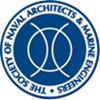Real-Time Identification of Parametric Roll
IF 1
4区 工程技术
Q3 ENGINEERING, CIVIL
引用次数: 0
Abstract
The International Maritime Organization (IMO) provides criteria to assess the vulnerability of ships toward the phenomenon of parametric roll. Such long-term vulnerability assessments permit to qualify statistically the ships vulnerability regarding parametric roll. However, it does not permit to assess the risk of parametric roll in real time. Thus, researchers and private company have developed methods and software to evaluate this risk using the real-time ship motions provided by the onboard inertial unit. Those methods detect parametric roll events when it appears and warn the officer of the watch of the immediate danger. This paper presents an innovative real-time detection method and its validation. The detection method considers physical conditions required for parametric roll to appear. Especially, it considers the coupling between the roll and pitch motions. The method and its associated parametric roll alarm are entirely described. The results show that the method correctly identifies parametric roll in regular longitudinal waves and do not lead to false detection in regular beam waves. A statistical study in irregular waves based on simulated data presents very promising results with a parametric roll detection rate in head seas above 80% when heavy roll motions appear and a false detection rate in beam seas below 4%. Finally, a 2.5-day full-scale validation on a container ship provides promising results. The container ships, with typical hull shape presenting flat stern and pronounced bow flare, are especially subject to parametric roll. Operationally, several accidents which have led to the loss of containers at sea may be imputed to this phenomenon (France et al. 2003; Carmel 2006; MAIB 2020; DMAIB 2022). Following the accidents of the C11-class container ship (France et al. 2003) and of the Maersk Carolina (Carmel 2006), both due to parametric roll, insurers asked the shipowners to take measures to avoid such failure to appear (Dølhie 2006). Two solutions are rapidly developed to answer this request. The first one is developed by SeaSense and named SeaSense Monitoring (Nielsen et al. 2006).参数滚动的实时识别
国际海事组织(IMO)提供了评估船舶对参数横摇现象脆弱性的准则。这种长期易损性评估可以从统计上确定船舶在参数侧倾方面的易损性。然而,它不允许实时评估参数滚动的风险。因此,研究人员和私营公司已经开发出方法和软件,利用机载惯性单元提供的实时船舶运动来评估这种风险。这些方法检测参数滚动事件,当它出现,并警告值班人员的直接危险。本文提出了一种新颖的实时检测方法及其验证。该检测方法考虑了参数化辊出现所需的物理条件。特别考虑了横摇和俯仰运动之间的耦合。详细介绍了该方法及其相关的参数滚动报警方法。结果表明,该方法能够正确识别规则纵波中的参数横摇,不会导致规则纵波中的误检。基于模拟数据的不规则波统计研究结果表明,当出现大横摇运动时,首浪的参数横摇检测率在80%以上,横浪的误检率在4%以下。最后,在一艘集装箱船上进行了为期2.5天的全尺寸验证,结果令人鼓舞。典型的集装箱船船型为平尾和明显的艏耀斑,尤其容易受到参数横摇的影响。在操作上,导致海上集装箱损失的几起事故可归咎于这一现象(France et al. 2003;卡梅尔2006年;MAIB 2020;DMAIB 2022)。继c11级集装箱船(France et al. 2003)和Maersk Carolina (Carmel 2006)事故后,由于参数滚转,保险公司要求船东采取措施避免此类故障的出现(Dølhie 2006)。为了回答这一要求,迅速开发了两种解决方案。第一个是由SeaSense开发的,命名为SeaSense Monitoring (Nielsen et al. 2006)。
本文章由计算机程序翻译,如有差异,请以英文原文为准。
求助全文
约1分钟内获得全文
求助全文
来源期刊

Journal of Ship Research
工程技术-工程:海洋
CiteScore
2.80
自引率
0.00%
发文量
12
审稿时长
6 months
期刊介绍:
Original and Timely technical papers addressing problems of shipyard techniques and production of merchant and naval ships appear in this quarterly publication. Since its inception, the Journal of Ship Production and Design (formerly the Journal of Ship Production) has been a forum for peer-reviewed, professionally edited papers from academic and industry sources. As such, it has influenced the worldwide development of ship production engineering as a fully qualified professional discipline. The expanded scope seeks papers in additional areas, specifically ship design, including design for production, plus other marine technology topics, such as ship operations, shipping economic, and safety. Each issue contains a well-rounded selection of technical papers relevant to marine professionals.
 求助内容:
求助内容: 应助结果提醒方式:
应助结果提醒方式:


